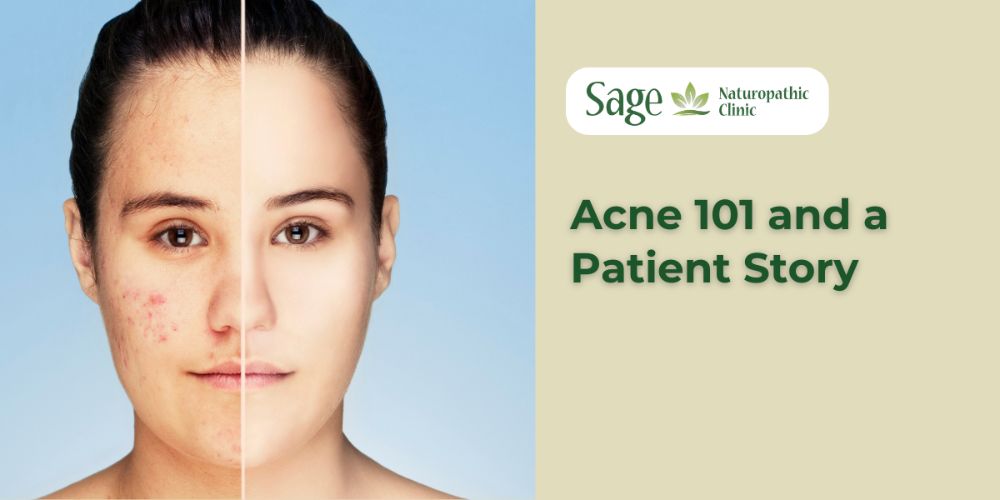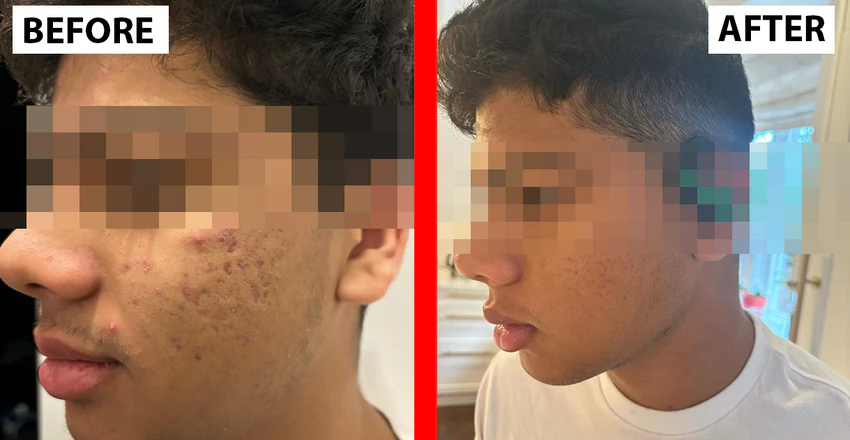
Acne—a word that often evokes memories of teenage struggles, mirror confrontations, and countless battles with over-the-counter creams and potions. But acne is more than just a cosmetic concern; it’s a complex skin condition involving biological processes, emotional resilience, and societal perceptions. Let’s dive deeper into the scars—both literal and emotional—that it often leaves behind.
Acne is not just a superficial problem but a multifaceted condition that affects millions worldwide. It is often viewed as a teenage issue, but acne can persist well into adulthood. What many fail to realize is that acne involves a variety of factors, including hormonal fluctuations, genetic predispositions, stress, diet, and even skincare routines.
At its core, acne often stems from an overproduction of sebum—an oil that the skin secretes to protect itself. The problem arises when there’s too much sebum, leading to clogged pores filled with dead skin cells and bacteria.
Several factors contribute to the overproduction of sebum, and understanding these can help in managing or preventing breakouts:
- Hormones: Hormonal fluctuations during puberty, menstruation, pregnancy, or due to conditions like Polycystic Ovarian Syndrome (PCOS) can lead to increased oil production.
- Genetics: If your parents had acne, you are more likely to experience it as well.
- Stress: While stress doesn’t directly cause acne, it can trigger hormones that increase oil production, worsening the condition.
- Diet: Some studies suggest that certain foods like dairy and high-glycemic foods might contribute to acne flare-ups. There seems to be a dose – dependent relationship with dairy where up to 3 servings a week seem to be tolerated, but more than that can potentially aggravate acne.
- Skincare Products: Using comedogenic (pore-clogging) products can exacerbate acne.
- Environmental Factors: Pollution, humidity, and seasonal allergies can contribute to acne, as can friction from clothing or masks (remember “maskne”?).
Acne manifests in different forms, each requiring unique approaches for treatment:
- Whiteheads: Closed, clogged pores that result in small white bumps.
- Blackheads: Open, clogged pores that appear dark due to oxidized sebum.
- Papules: Small, red, tender bumps caused by inflamed hair follicles.
- Pustules: Pimples with pus at the tip, often red at the base.
- Cysts and Nodules: Deep, painful, pus-filled lumps under the skin.
While not all acne is preventable, there are steps you can take to minimize breakouts:
- Cleanse Gently: Wash your face twice daily with a gentle, non-comedogenic cleanser. Pat your skin dry to avoid irritation.
- Moisturize: Use an oil-free moisturizer to keep your skin hydrated and balanced, protecting the moisture barrier.
- Avoid Touching Your Face: Touching or picking at pimples can transfer bacteria, worsening breakouts.
- Wash Bedding Regularly: Dirty pillowcases and sheets can aggravate existing acne. Wash them at least once a week.
- Use Acne-Fighting Ingredients: Look for products containing salicylic acid, benzoyl peroxide, or retinoids to help prevent clogged pores.
- Watch Your Diet: Limit sugar, dairy, and high-glycemic foods. Increase your intake of fruits, vegetables, and foods rich in omega-3 fatty acids.
- Get Enough Sleep: Lack of sleep can lead to inflammation and dehydrated skin, which can worsen acne.
- Manage Stress: High stress levels increase cortisol production, which, in turn, leads to more sebum production.
Acne treatments vary depending on the severity of the condition. Often, a combination of treatments is necessary to reduce both active acne and the scarring that may result.
Over-the-Counter Solutions:
- Salicylic Acid: This beta-hydroxy acid penetrates pores to dissolve debris, preventing future breakouts.
- Benzoyl Peroxide: Kills acne-causing bacteria and dries out inflamed pimples, though it can cause dryness.
- Retinoids**: These vitamin A derivatives speed up cell turnover, unclogging pores and promoting fresh skin. However, they should be used with sunscreen due to increased sun sensitivity.
Prescription Medications:
- For stubborn acne, topical and oral antibiotics, birth control pills, or isotretinoin (Accutane) might be necessary. These treatments should be approached cautiously, as they come with potential side effects.
Professional Treatments:
- Chemical Peels, Laser Therapy, and Blue Light Treatments: These target deeper acne and can be effective where topical treatments fail.
- Cortisone Injections: For severe cystic acne, these can offer quick, though temporary, relief.
- Microneedling: An excellent option for treating acne scars and pitting.
Acne is not just a physical condition; it can have a significant psychological impact. Living with acne, especially in a world that glorifies flawless skin, can take a toll on mental health. For many, the emotional scars acne leaves behind are just as deep as the physical ones. Acne can cause social anxiety, decreased self-esteem, and even depression. It’s important to acknowledge the emotional weight acne carries and understand that healing goes beyond the skin.
Acne is a multifaceted condition that affects people in more ways than one. It’s not simply a matter of appearance; it’s a story of hormones, genetics, stress, and self-acceptance. The path to clear skin is as unique as each individual. By raising awareness, breaking down stigmas, and promoting empathy, we can help shift the narrative surrounding acne and encourage compassionate conversations. Together, we can replace shame with understanding and offer support to those affected.
A story from one of Dr. Rahima’s patients
Patient X struggled with acne for a long time. However, as mentioned above, there are often multiple factors that impact one’s acne experience. X hid his face in his hoodie, and he never smiled for the camera. X tried the “do it at home” items: he washed his face and he used TankNation products, but sometimes getting to a new habit can be challenging so he wasn’t consistent with these things. Finally, in February of 2024, X saw his family doctor and was prescribed Benzoyl Peroxide (to be used in the morning) and Retinol (to be used at night). Soon, the severe cystic type of acne started to dry up. At this point, X turned his attention to the scars and pitting that had results from his acne. He did some mild microneedling in mid-March, avoiding any areas with active lesions on his face. Then he continued using the TankNation products day to day and the doctor’s prescriptions as needed. In August, X did another microneedling session. It took a long time to figure out what would work for him, despite working with an ND who knows quite a bit about acne! Take a look at the before and after photos below.


Dr. Rahima Hirji, ND
Co-owner